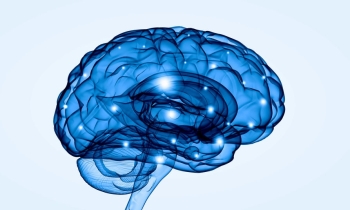
The Brain – a departmental overview
Much has been written in recent years about the brain, neuroplasticity, and what it has to do with our choices and behavior. While it may all seem like Greek to most of us, even a basic understanding of the brain can make a tremendous difference in our everyday interactions.
Think of the brain like a large department store. Ladies, you might picture Macy’s or Nordstroms. Guys, think Home Depot or Lowe’s. As you picture yourself shopping at any of these stores, you are able to picture specific departments that each store has. For example, if you were looking for a gift for an elderly relative, you would probably not go to the boys toddler department. Likewise, guys, you wouldn’t look for sheet rock in the paint department right? That’s because each department specializes in something specific. Your brain is very much like this as well. There are different “departments;” each of which has a specific job to do.
Here is an overview of some of the major departments and their functions:
Most of us have heard the terms “right brain” and “left brain.” These terms are generally referring to the right and left hemispheres of the brain. The right brain is holistic and nonverbal, intuitive and emotional. It sends and receives messages that allow us to communicate without words (tone of voice, posture, gestures, facial expressions, eye contact etc.). This is where we process abstract information. The right brain focuses more about the big picture – the meaning and feeling – of an experience (think “visceral”).
The left brain prefers structure and order. It is logical, literal, linguistic (likes words) and linear (puts things in a sequence or order). This is where the analytical work gets done – from math to reading to speaking and writing. The left brain would be more concerned with the letter of the law, whereas the right brain would be more concerned with the spirit of the law.
In order for us to live balanced, meaningful lives it is important that the two hemispheres of our brain work together. Using only one side (or the other) would be like trying to swim using only one arm. Technically, it might be possible but we would be a lot more successful (and efficient) if we used both arms together! It’s very much like this with your brain too. If you only used your left brain, you would “divorce” your logic and language from your feelings and personal experiences. However, if you only used your right brain, you might feel like you were drowning in bodily sensations, images and emotions. Obviously, neither is ideal. The goal is to promote horizontal integration to help both sides work together so we can achieve more complex goals and carry out more sophisticated tasks.
Now imagine your department store brain has two floors with an escalator in between. The downstairs level (brain stem and limbic region) is responsible for more basic functions (breathing and blinking), innate reactions and impulses (like fight or flight) and strong emotions (fear and anger). This department is essential for survival since it functions on instinct and therefore enables a much quicker response when danger is present. For example, if you heard a noise behind you in a dark alley at night, your best bet would not be to think rationally whether this stranger might be lost or need directions! Your body would immediately fly into action (due to the instant flood of adrenaline) to keep you safe before trying to logically sort out the situation. As human beings, we are wired to sense danger, even before we fully understand the details of the situation. This is our survival instinct that puts us into “defend and protect mode.” It’s important to note, however, that this same flood of adrenaline that helps keep you safe also “shuts down” a different department of your brain.
The upstairs floor of your department store brain is the CEO of the entire store (located just behind the bone of the forehead). This department (the prefontal cortex or PFC) is in charge of “executive functioning” – things like planning ahead, considering possible outcomes of different choices, empathizing with others, being flexible to changing circumstances, filtering thoughts before saying them out loud etc. The PFC is the “security guard” or conscience of our brain standing between our emotional impulses and verbal outbursts and foolish decisions.
Our PFC is designed to take into consideration all of the different information available and weigh out different pros and cons of a situation before drawing a conclusion. There are a multitude of factors that impact how effectively our PFC works. If we experience a sudden surge of adrenaline, our “upstairs brain” department is immediately closed for business. The escalator from downstairs (instinct) to upstairs (analytical thinking) STOPS. This enables us to act quickly in the face of danger and keep ourselves safe. However, if we are upset but not actually in immediate danger, the adrenaline surge prevents us from acting rationally and making a wise choice in the moment. The next major factor determining the efficacy of the PFC is how much “practice” we got using it as it was developing. When we are born, our “downstairs brain” develops far more quickly since survival instincts are particularly necessary even at an early age. Our “upstairs brain” isn’t actually finished developing until our mid-20’s. The best way to develop a strong upstairs brain (or PFC) is to practice using it as often as possible through the growing-up years. Like “building a muscle” at the gym by repeatedly working it out, the brain’s neural pathways become stronger the more they are used.
As you can imagine, vertical integration is the goal – to enable both the upstairs and downstairs brains to work together. This helps us distinguish real danger from perceived danger which promotes a healthier, more adult response to everyday situations.
Learning how to shift your thoughts, feelings, responses and perception of the world is much easier than you might think! It begins with a basic understanding of how the brain works. When you understand why you respond to difficult situations in less than ideal ways, you’re able to choose differently. Integrating your “departmental brain” opens up new possibilities for relating to people at work, in your personal life and yourself.
OUR GUARANTEE: you deserve the best individual, couples or family therapist possible. If you don't feel like the couples therapist that you met with was the right fit, then free of charge you can try out a different therapist. Being in a group practices allows for flexibility.
The Center for Growth Therapy Offices in PA, NJ, VA, GA, NM, FL
- Ocean City Therapy Office
360 West Ave, Floor 1, Ocean City, NJ 08226 - Mechanicsville Therapy Office
9044 Mann Drive, Mechanicsville Virginia, 23116 - Alpharetta Office
11720 Amber Park Drive, Suite 160, Alpharetta GA 30006 - Society Hill Therapy Office
233 S. 6th Street, C-33, Philadelphia PA 19106 - Art Museum / Fairmount Therapy Office
2401 Pennsylvania Ave, Suite 1a2, Philadelphia PA 19130 - Santa Fe Therapy Office, 2204 B Brothers Road, Santa Fe, New Mexico, 87505
- Telemedicine: We have therapists who are licensed to work in Florida, Georgia, New Jersey, Virginia New Mexico and Pennsylvania





















